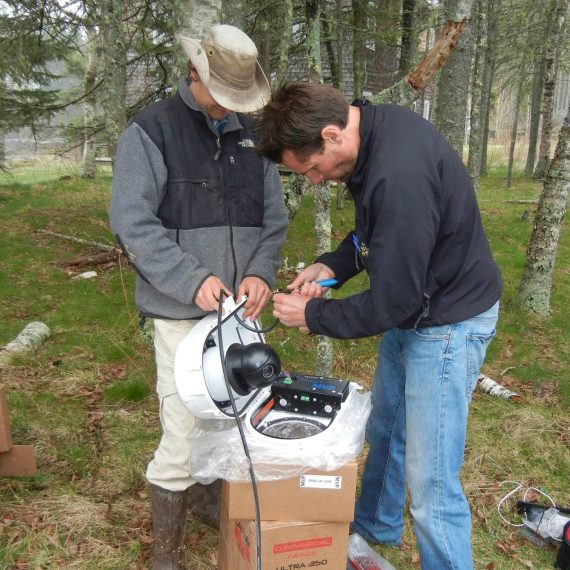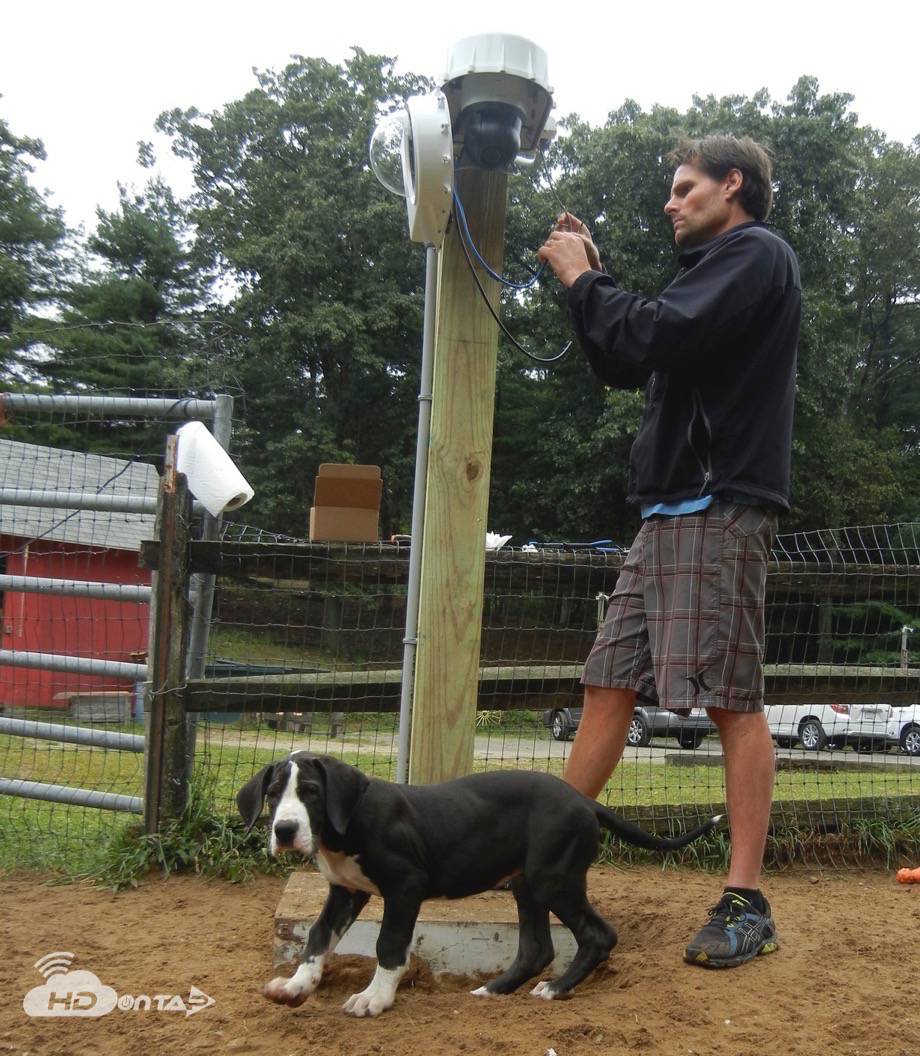Can I install the webcam myself?
Yes! HDOnTap can prepare the camera by pre-configuring it and getting it ready for easy self installation. If you have any issues during the installation, HDOnTap support representatives are available to help.
Do you offer installation services?
Absolutely! HDOnTap offers professional webcam, off-grid solar power and fixed wireless network installation services. We also ship webcam hardware packages pre-configured and ready for self-install making for an easy installation process. Self-install ready hardware packages require little to no technical skills – mount the camera and plug it in. If questions arise while doing the install, our support representatives are standing by ready to help.
Do you provide streaming analytics?
HDOnTap’s streaming services include live stream analytics. These stream analytic reports can be viewed online and/or received via email.
Do you support older mjpeg type cameras?
No, our network was designed and built around H.264 IP Network cameras. We do not support the older legacy type MJPEG cameras for the purpose of streaming. However, we do support MJPEG in our Studio Services for Camera Control.
Does your network support live streaming software?
Yes! Our network works with most H.264 live streaming software solutions including but not limited to Tri-Caster, Telestream Wirecast, Adobe Flash Media Encoder, OBS and VMix. This allows for authenticated RTMP push delivery of your live stream – in HD!
Does your network support recording?
Yes! Our network is configured to support simultaneous server side recording of your live stream in either FLV or MP4 formats. The recordings can be viewed and downloaded via a web interface.
How long does it usually take to get up and running?
HDOnTap has most of webcam hardware already in stock. Depending on the hardware and shipping method you choose, we can usually have you up and running within 2 to 7 days. If you already have a supported webcam installed, we may even be able to get you started the same day!
How many simultaneous views are able to watch my webcam?
HDOnTap’s network was built with both reliability and scalability in mind. The network is currently built to serve over 75,000 simultaneous viewers with the ability to turn up more capacity within minutes should the demand arise.
Is it a problem to move the camera once installed?
Not at all. You are free to move your webcam at any time to a different location provided the necessary power and network connection to your internet router are in place.
Should I be concerned about bad weather?
Inclement environmental conditions and weather are not a concern. Our patented camera enclosure systems are engineered for all environments such as rain, snow, ice, dust, and salt. Even if it is extremely hot, extremely cold, or damp coastal conditions, we have an enclosure for you! In fact, they clean themselves too!
What devices can I play my live stream on?
HDOnTap’s network was designed and built to stream to virtually any device – Computer, Smart Phone/Tablet (IOS & Android), TV and Streaming Devices (Roku, AppleTV, Boxee, etc).
What is needed to get started using HDOnTap's streaming services?
A standard camera installation involves four key components: power, dedicated internet, network connection, and a suitable mounting location. An HDOnTap representative is ready to help you identify the most cost-effective solutions for each component based on your specific needs.
Power – All webcam hardware solutions require power of some sort – either utility power or off-grid solar/wind. 24VAC, 115/230VAC and/or Power Over Ethernet are typical power delivery options. Whether a standard AC power receptacle is nearby the camera’s mounting location or not, low voltage, high voltage and off-grid power options exists.
Dedicated Internet – A dedicated internet connection of at least 1024Kbps upload speed is recommended to stream live video using HDOnTap’s services.
Network Connection – A network connection from the camera to the internet router is required. This connection can be over wired Ethernet, WIFI or long range fixed wireless technology.
Mounting – Whether mounting to an existing pole, wall, ceiling, parapet, on a rooftop or if no mounting surface exists, HDOnTap’s hardware solutions include mounting adapters to facilitate the installation. If your not taking advantage of our installation services, our hardware solutions are designed to be as simple as possible for self-install.
What is the difference between a static IP address and a dynamic IP address?
A static public IP address (the IP address does not change) is provisioned by your ISP making it easier to work with, but it may cost more money per month. Working with a dynamic IP address that changes occasionally is possible if necessary.
What kind of internet connection is required?
A dedicated internet connection of at least 1024Kbps upload speed preferably with a static public IP address if available is recommended. HDOnTap can work with a dynamic IP address if a static public IP address is not available.
What speed internet connection is required to stream live video?
Faster upload speeds equate to higher quality live video streaming. HDOnTap can setup your live video streaming service with a minimum of 512Kbps upload speed. Video resolution, video frame rate, compression and the amount of motion in the video are all factors that determine the required upload speed to support live video streaming. At 15 frames per second, the following internet upload speeds are typically required for the following video resolutions. 640×360 (360p) – 512Kbps, 800×450 (450p) – 768Kbps, 1024×576 (576p) – 1024Kbps / 1Mbps, 1280 x 720 (720p HD) – 1,536Kbps / 1.5Mbps, 1920x1080 (1080p) - 2,500Kbps / 2.5Mbps and 3840x2160 (2160p or 4K Ultra HD) - 8,000Kbps / 8Mbps.
Who monitors my webcam and live stream?
HDOnTap’s managed webcam streaming services include webcam and network monitoring. Our monitoring servers are configured to monitor your webcam making sure it is online. If the camera goes offline, alerts are sent via email and/or text message to your cell phone letting you know an issue exists. The live stream player will display and offline message until the camera is back online.



